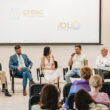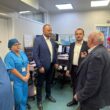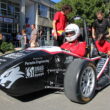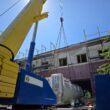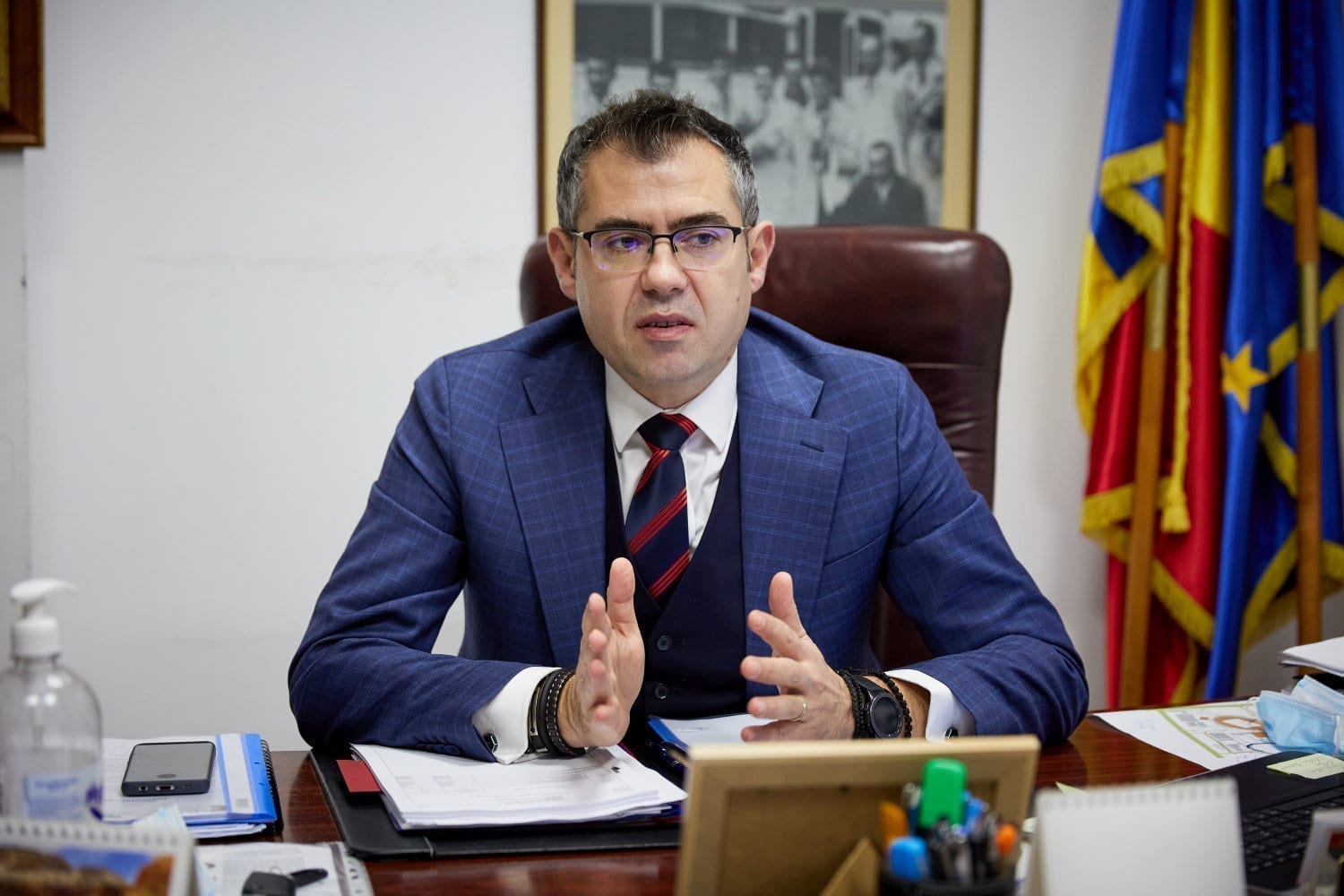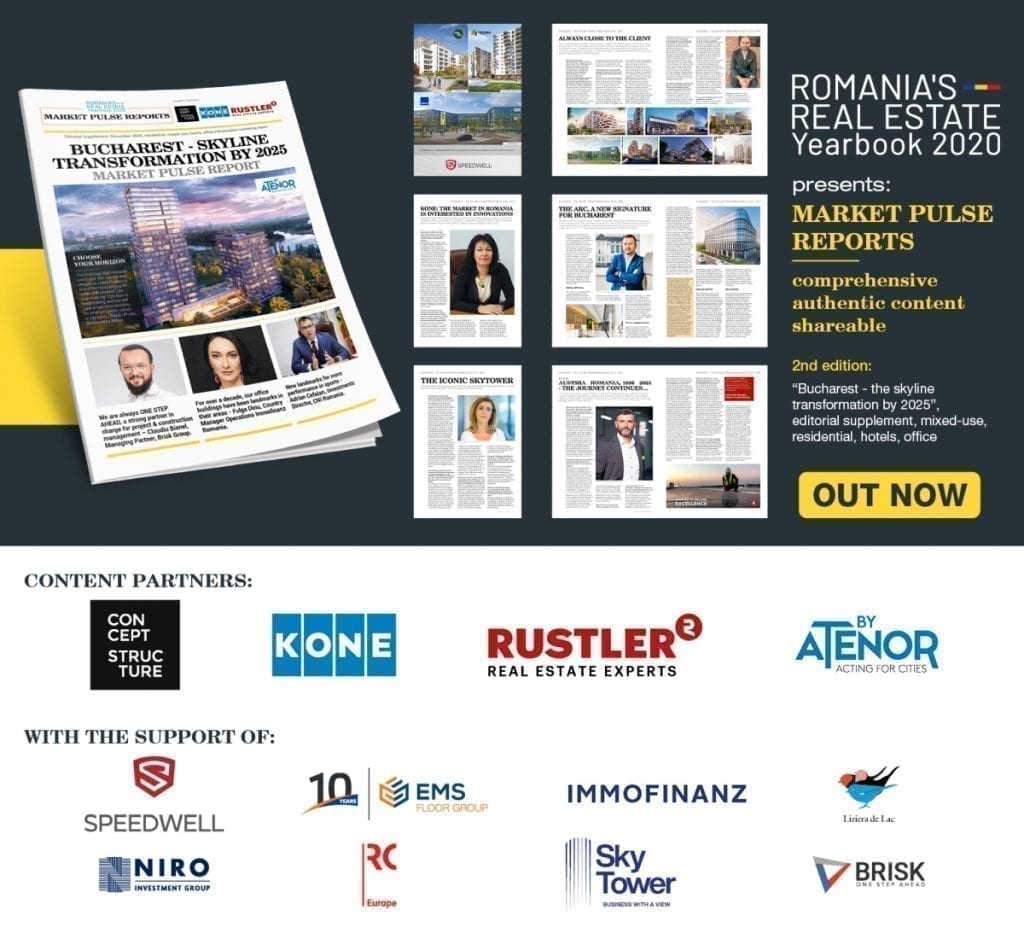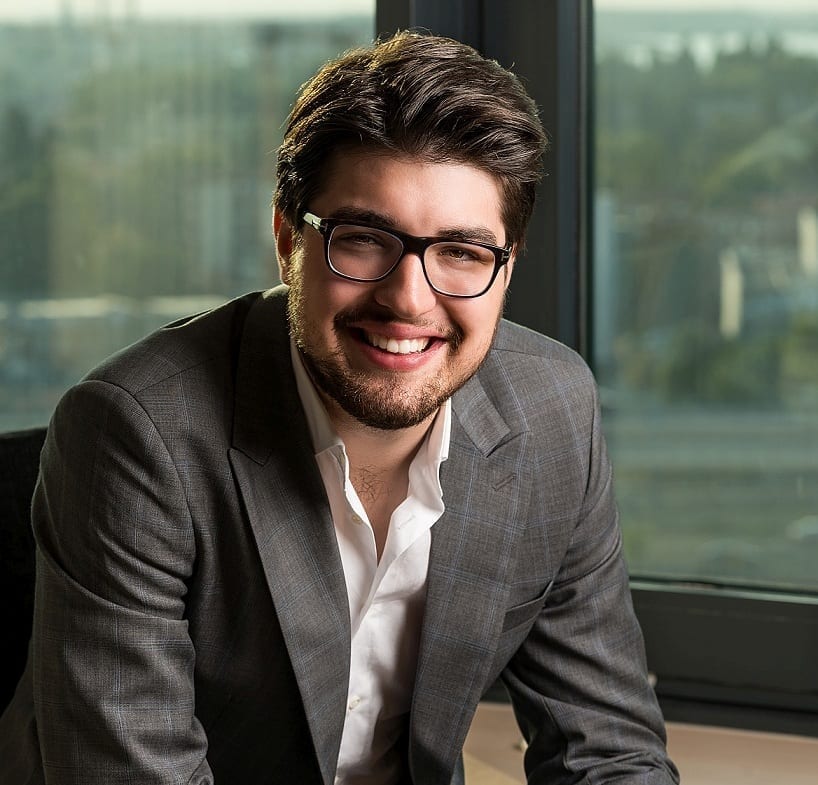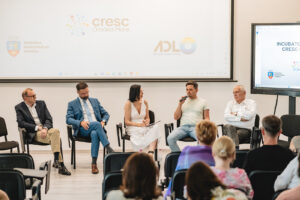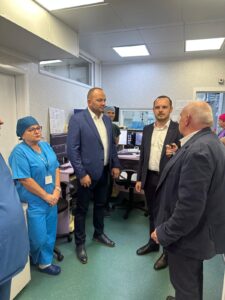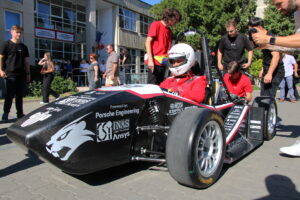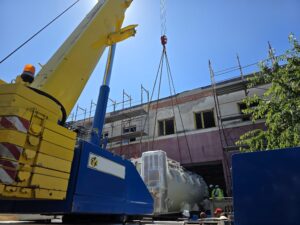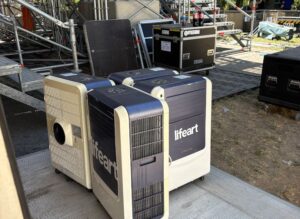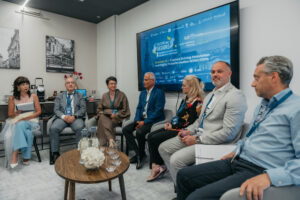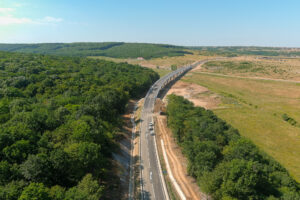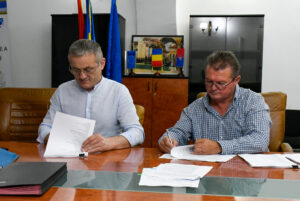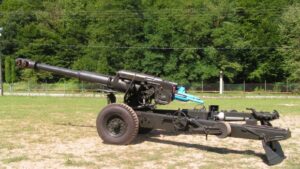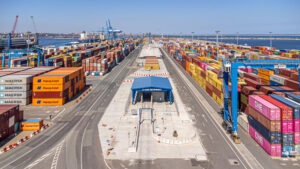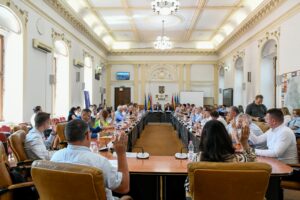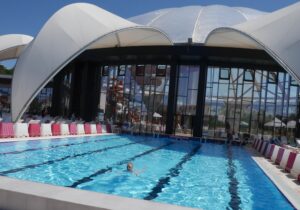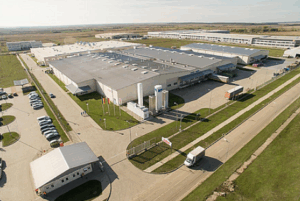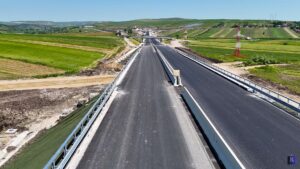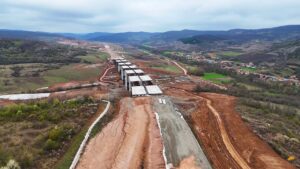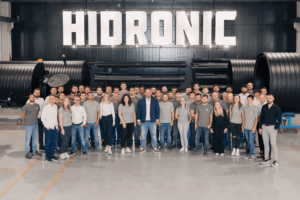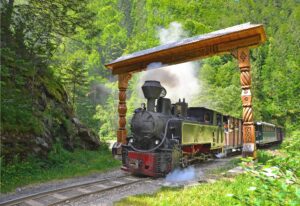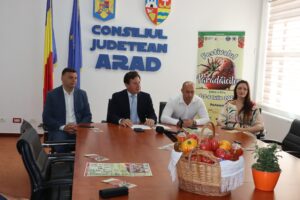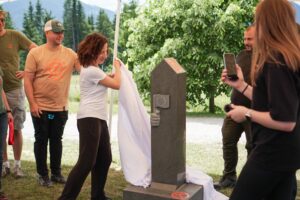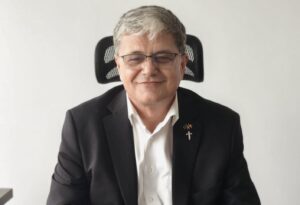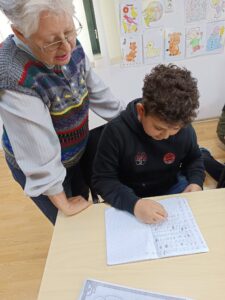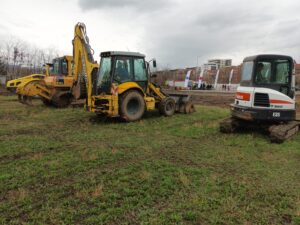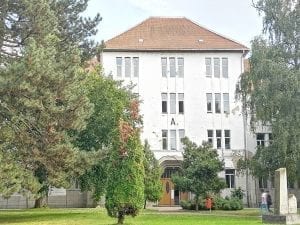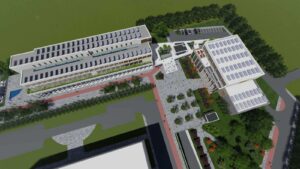Stadiums around the world have also an iconic role in their cities, blending attraction with historical sites and modern business or living architectural landmarks. From this perspective, which were the main ideas that inspired the integration of the new arenas in the capital’s fiber? More details and future benefits, explained by Adrian Cefalan, Investments Director, Compania Nationala de Investitii (CNI).
Published in an exclusive, investment destination – oriented, market tour: “Bucharest – the skyline transformation by 2025” – Read: here
With regard to the stadiums included in the EURO2020 program, we took into account their reconstruction, all the 3 arenas being considered symbols of the city. Moreover, as the construction of new arenas is in question, the latest architectural trends were taken into consideration, together with the actual homologation conditions required for the arenas to be functional, to lend significance to the city and in order for them to be valued at their correct status. The architectural concept of the 3 arenas accomplished through CNI targeted a continuous use of the stadiums, not only during games, but by ensuring spaces for multiple related activities which would attract a large number of users during each day of the week, and not only during those days on which the arenas host sportive or cultural events.
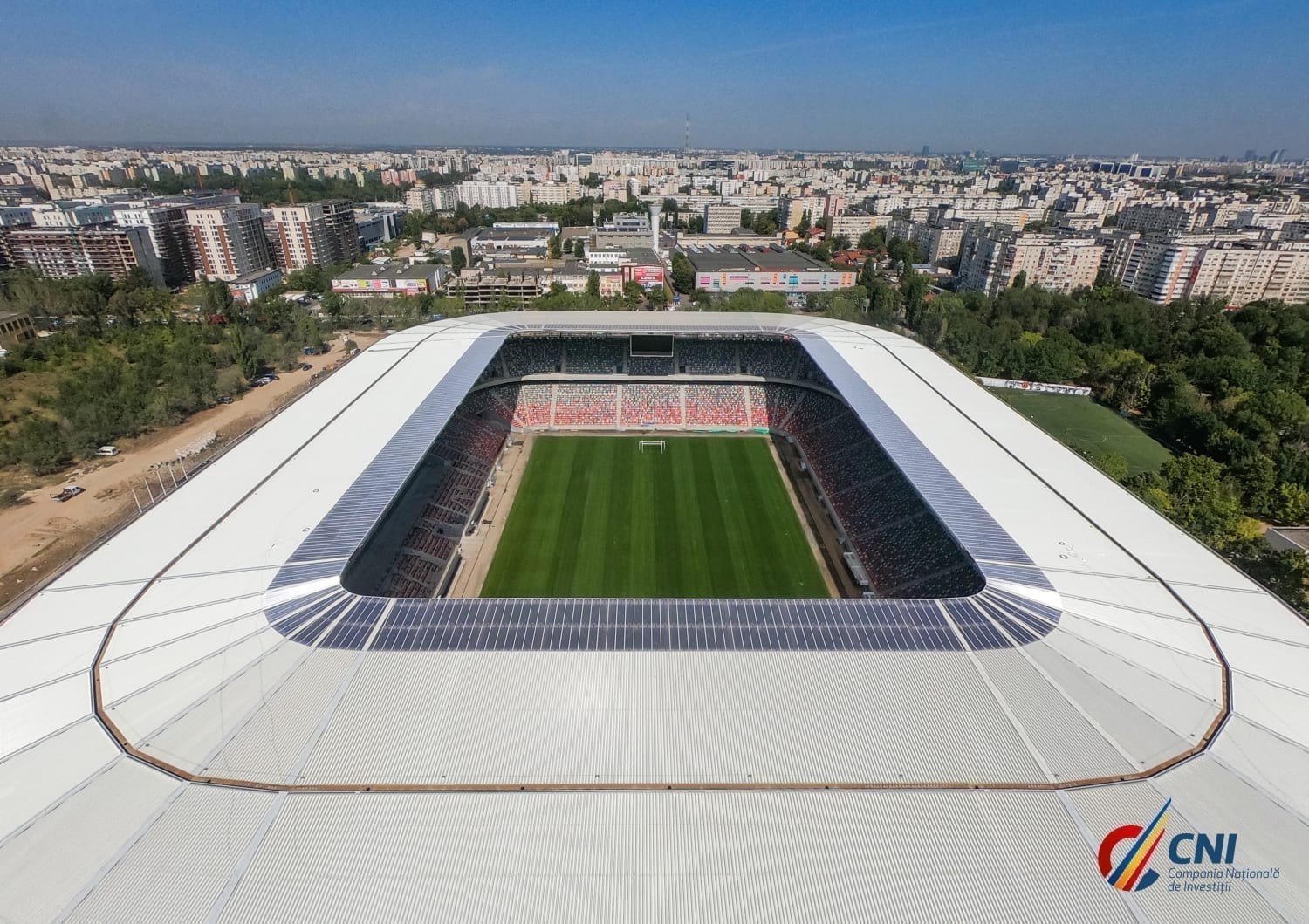
What defines best the new features and characters of the arenas?
The Steaua Stadium is a part of the „Steaua Sports Complex”, being a symbol of the Ghencea neighbourhood. It was on this stadium where football team Steaua București obtained one of its greatest performances, culminating with winning the European Cup Final in 1986, and also where the national football team reached some of its significant performances.
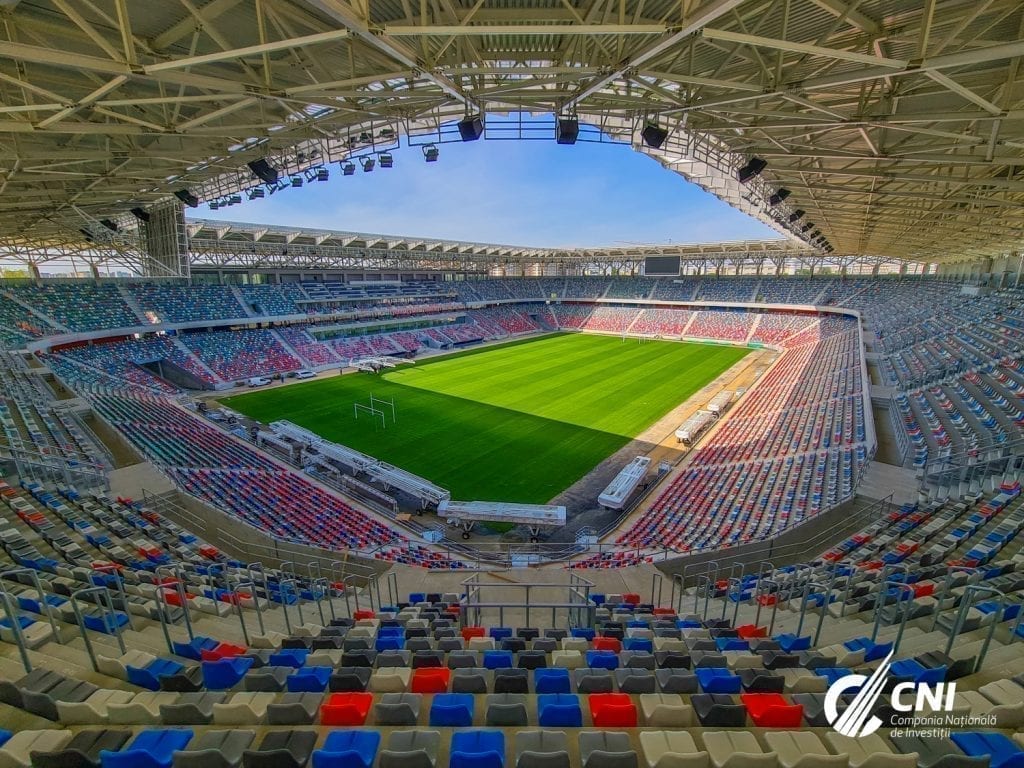
The stadium will firstly offer a modern social space, adapted to current requirements and connected to the city’s urban and social life. Moreover, by its reconstruction, the stadium is meant to be a new urban pole, a beneficial aspect both for the team’s fans – who would definitely not have accepted the construction of the new stadium in another location – and for spectators, as well as for the inhabitants of the city’s adjacent area. At the same time, the stadium’s new project will offer new experiences to fans through the possibility of enjoying the related facilities located at the stadium’s ground floor, at the pedestrian level.
The new facilities will increase the time spend within the sports complex both before and after the events. Among the innovations brought to the sports complex, one can count the museum, restaurants, commercial spaces dedicated to fans, as well as specially furnished urban spaces. Moreover, the spatial configuration, the shape of the stadium, with elongated posts-pillars, the roof floating above them and the urban space are meant to offer an iconic image of the Ghencea name, as well as a new identity for the Steaua fans.
Rapid Stadium
The Giulești – Valentin Stănescu stadium is localized in close vicinity to the central area of Bucharest, in the North-West area of the capital. The location is surrounded by Calea Giulești on the West side and by the railroad on the East side. The access within the stadium is granted on the West wing, from Calea Giulești.
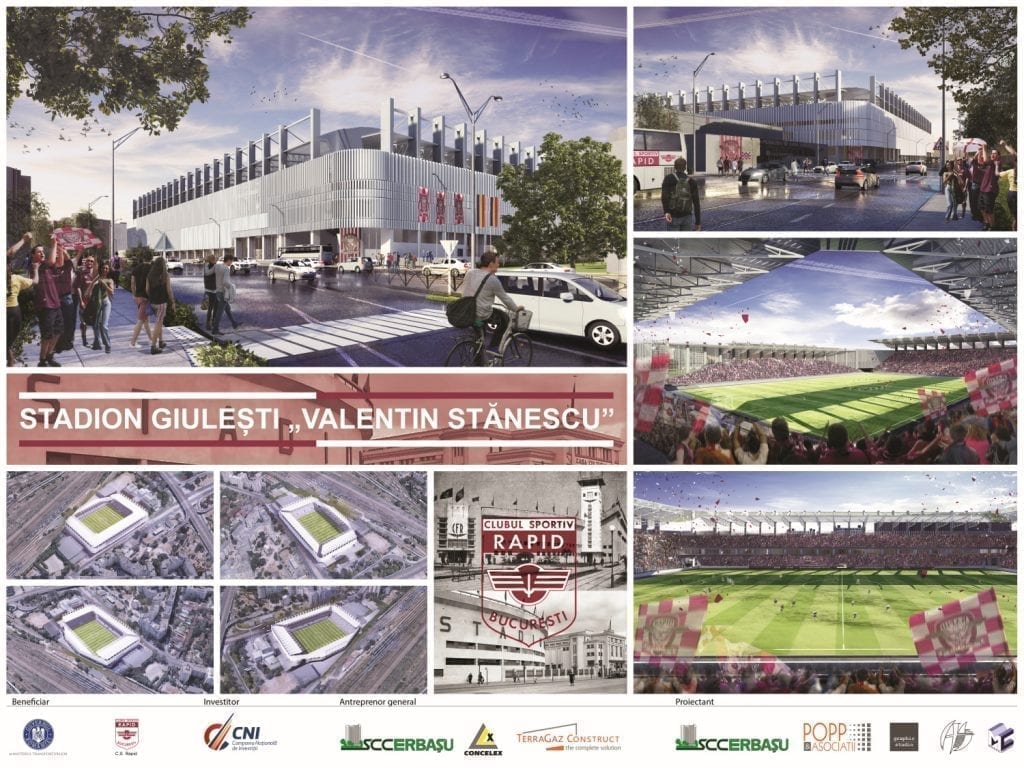
It also represents a symbol through the value it has generated during almost 80 years of sportive and extra-sportive events which took place on this stadium, or which were related to athletes affiliated to the club. This longevity laid the foundations of one of the most famous fans gallery in Romania and created one of the most intimate communities.
The social context is identified with a need of development of the sports activities performed at a high level, which involves automatically also inferior competition levels. These are stimulated both through the sports infrastructure, as well as through the increase of competitiveness and affiliation to high level sportive activities.
The architectural-urbanistic context is given by the symbolic meaning which Giulești stadium has acquired in the city context, becoming a landmark of the central – West area, near the Grant Bridge and the Northern Train Station. The stadium’s modernization obviously involves the re-invigoration of this architectural-urbanistic point of attraction. Although the location shows many constrains regarding the performance of the new construction, a decision was made for keeping the location of the old stadium, given the major symbolic value of the stadium among the Bucharest public and especially among the fans of Rapid București sports club. For that matter, the new construction will have a bear of elements concerning the sports club’s identity and history, especially at the grandstands’ level, where the club’s seal, name and year of foundation will be replicated by means of arrangement and color scheme of the seats.
The Giulești stadium was projected as a construction which, in spite of its dimensions, would fit in a non-aggressive manner in the nearby area of the location, one of the analysed criteria when performing the project being the area’s specificity. Through the new project, the spectator’s access within the arena is very well marked. The specific signaling elements (commercials, elements of signaling, logo etc.) were conceived and dimensioned as to provide an individuality to the ensemble without prejudicing the urban environment. The level of provided lightning (interior, perimeter and traffic areas) offers, apart from the highlighting of the structure, a harmonious and safe aspect in the area.
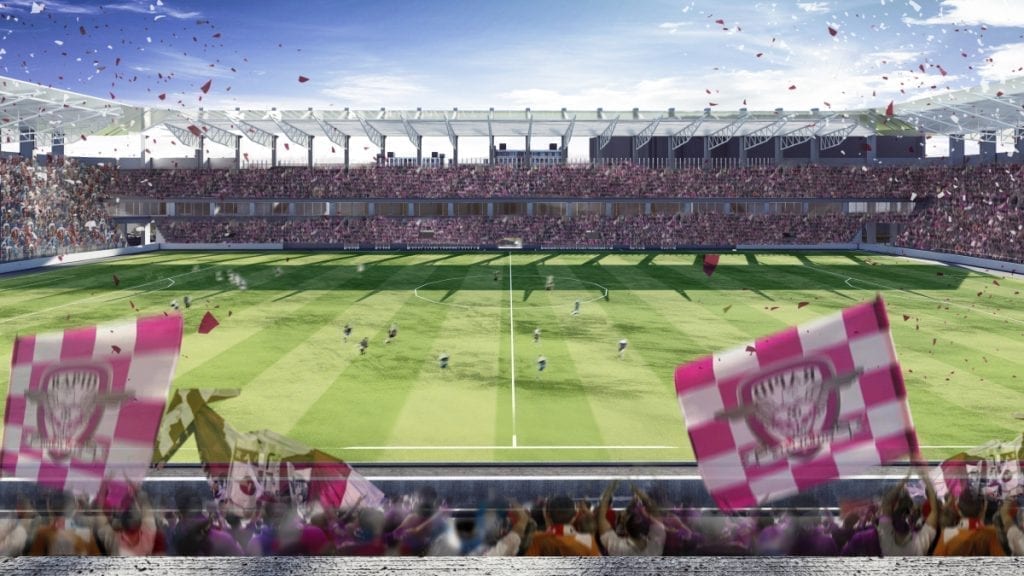
At the same time, the following identity elements concerning the image of the Rapid football club have been foreseen: the stars associated with the Rapid club’s legends (Walk of Fame) – in the shape of a rectangular plaque made of metallic board, with the engraved name of each athlete and the emblem of the sports discipline of which the said athlete has been a part of-excelled, framed in the flooring afferent to the spectators’ esplanade; the wall of „Rapid” legends – a monumental wall-sculpture made of corroded metal (Corten type), with the maximum height of 6,00 m, placed in the suggested urban space between the stadium and the gym, and the stadium and the Giulești theatre, respectively. The two elements are aesthetic and semiotic elements, suggested with the purpose of increasing the identity mark of the building and of the newly-built urban space, in front of and around the stadium, as well as to enhance the feeling of belonging to the Rapid club and implicitly to the large family of Rapid fans.
Arcul de Triumf Stadium
The sports complex suggested to be built will contribute to the development and support both of the cultural and sportive potential of the area, as well as to its touristic potential. The area of the new stadium’s location is representative from the point of view of nearby constructions and imposed an integrative approach of the already present valuable urban elements.
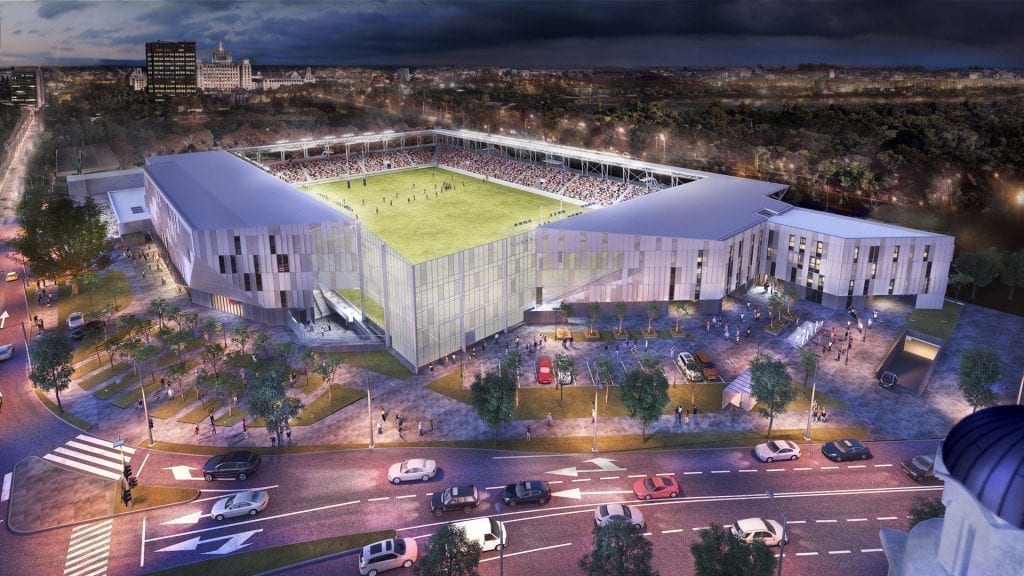
This project foresees an integration of the existent buildings constructed during different periods of time with disparate architectural images with the new stadium. Moreover, the stadium’s location in a traditional green area of the capital city, in the close vicinity of Herastrau Parc, shows a potential touristic advantage both for the people of Bucharest, as well as for the city’s visitors. Thus, the stadium has a single ring in order not to exceed the height of nearby houses, and its façade is integrated in the location’s architecture, without disturbing this already mixed area in terms of architectural styles.
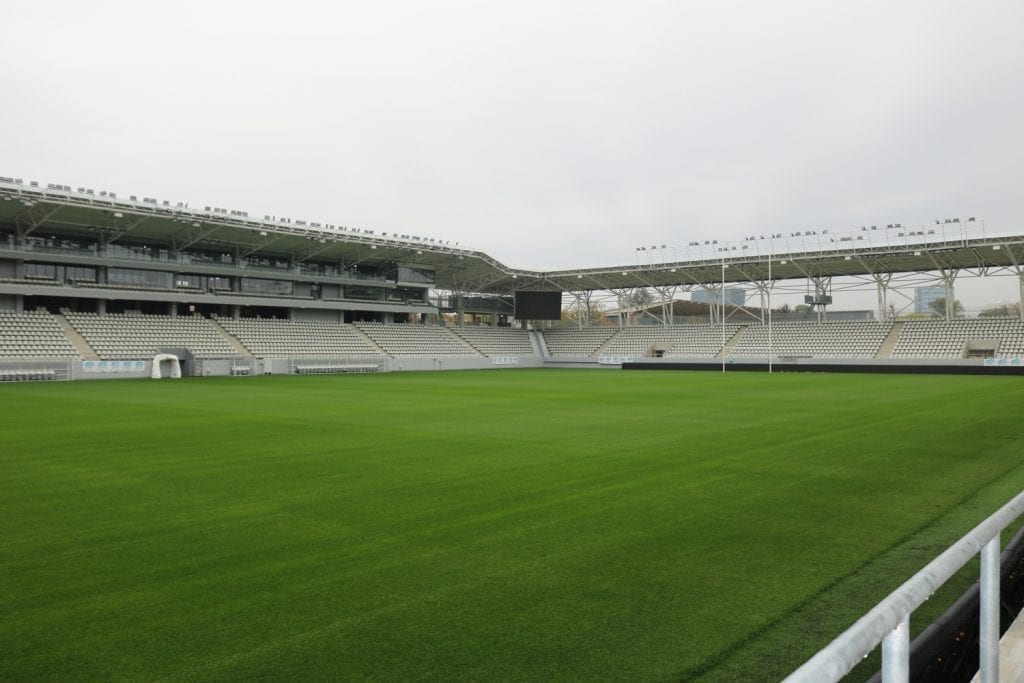
Facing the challenges raised by new forms of mobility, regulations, technologies, digitalization, patterns of work, economic models, what role can we assign to sport venues and competitions?
Competition arenas represent one of the oldest architectural structures, as one can only recall how any new settlement during the Roman Empire’s expansion and colonization stage included an amphitheater within the essential public utilities scheme. In fact, we can find the same pattern in the model of the communist regime, a period characterized by an accelerated development, as few cities in present Romania lack a stadium dating from the 1960s and 1970s.
What we wish to underline is the fact that the utility of a stadium exceeds the balance between demand and supply, being rather an indispensable public function, regardless of the nature of the community and local socio-economical aspects. In spite of the context, a public stadium is an urban facility supported from the community budget, and discussions generally arise more on the topic of the impact of maintenance costs than of that of utility degree. Except for probably small communities with highly negative demographic evolutions, as long as there is an adequate sporting infrastructure, an important part of the population will use it in order to practice sports or for recreation purposes.
Which were the most provocative challenges in the process to create arenas compatible for a EURO championship?
The greatest challenge was that of building three perfectly functional arenas which would comply with all the current homologation standards and which would replace old locations. In the case of Arcul de Triumf and Giulești stadiums one must mention the fact that the compliance with all the requirements concerning the stadiums’ homologation in the UEFA IV category was a great challenge, both initially, on the conception level (projection), as well as subsequently, in the execution stage, given the dimensions of the locations in relation with their nearby area.
Another challenge concerned the integration of all the beneficiaries’ requirements in constructing the arenas. For example, in the case of Steaua stadium this meant the organization of the spaces dedicated to other sportive activities within the Steaua Army Bucharest Sportive Club (wrestling, weight lifting, boxing, table tennis, judo, rifle shooting and archery). In the case of the Arcul de Triumf stadium, the major challenge was to integrate within the project the space for the medical recovery centre for athletes, with modern and unique furnishings, all these requiring integration in the new construction, but having available the same land surface of initial constructions. Moreover, in the case of the Arcul de Triumf stadium another challenge was the integration within the project of a hotel for athletes with a capacity of 40 rooms, furnished with a semi-Olympic pool.
What are the features that professionals will use and enjoy? How about the spectators?
Each of the 3 arenas CNI is currently constructing in Bucharest will be similar to the latest sportive arenas developed lately both at a European and world level.
Athletes and officials will enjoy facilities in accordance with the UEFA standards (locker rooms, warm up rooms, anti-doping controls, medical cabinets, recovery areas etc.) Moreover, the projects also foresee accommodation spaces for athletes and dining facilities within the stadium. What is more, specific standards have been created for the press in accordance with the UEFA’s IV category homologation requirements. All the 3 stadiums use the latest technology, such as the technology related to the game field (natural turf ruggedized with synthetic fibers), those used for the lightning systems, including the nocturnal installation (LED technology), technologies related to fire prevention and extinction, installations’ management technologies (BMS), etc.
A series of facilities have been foreseen for spectators, which can be granted both during the development of sportive events, as well as apart from them. Thus, paths of circulation properly dimensioned have been calculated and foreseen, together with performant sound systems, scoreboards with dimensions and resolutions adapted to the stadium’s size, sanitary spaces and points of service for all the arenas’ sectors. Moreover, points of interests which can become attractive also apart from the events’ development have also been foreseen, such as spaces for museum, commercial spaces and a restaurant.
Published in an exclusive, investment destination oriented, market tour:
“Bucharest – the skyline transformation by 2025”
Content partners:
Concept Structure | KONE | Rustler | Atenor
With the support of:
SkyTower | Immofinanz | Speedwell | Brisk
EMS Floor | RC Europe | NIRO Group | Liziera de lac
